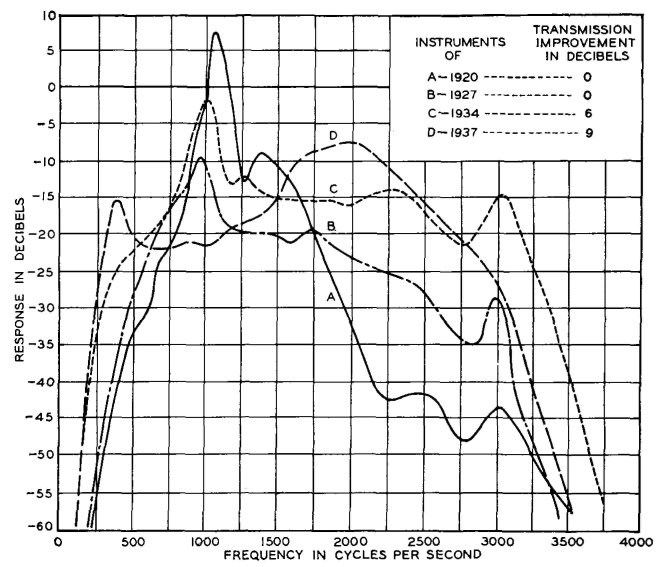| Electrical Communication is a free textbook on the basics of communication technology. See the editorial for more information.... |

|

Home  Telephone Exchange Service and Systems Telephone Exchange Service and Systems  Modern Telephone Sets Modern Telephone Sets |
|||






|
|||
Modern Telephone SetsThe transmitters and receivers used in modern telephone sets were discussed in Chapter 4. As was explained, much progress has been made in the design of transmitters and receivers.7,8,9,10 Antisidetone circuits are used in modern telephone sets. The capacitors, inductors, and other components are of superior design. The performance of modern telephone sets is similar to that of curve D of Fig. 10. Most new telephones are of the handset type.ref.1
In early handsets, the mechanical coupling afforded by the handle to the transmitter and receiver was an important factor in causing sustained oscillations or "howling." In certain early European handsets this difficulty was met by using insensitive transmitters and receivers so that howling did not develop. In the design of the modern handset, howling because of mechanical coupling is controlled.ref.9 But, even with the antisidetone circuit, some of the output from the receiver does reach the transmitter through the air, and this acoustic coupling is a very important factor limiting the sensitiveness of the set. New telephone sets, somewhat revolutionary in nature, are now (1949) in the practical trial stage.
|
|||
Home  Telephone Exchange Service and Systems Telephone Exchange Service and Systems  Modern Telephone Sets Modern Telephone Sets |
|||
Last Update: 2011-05-30


